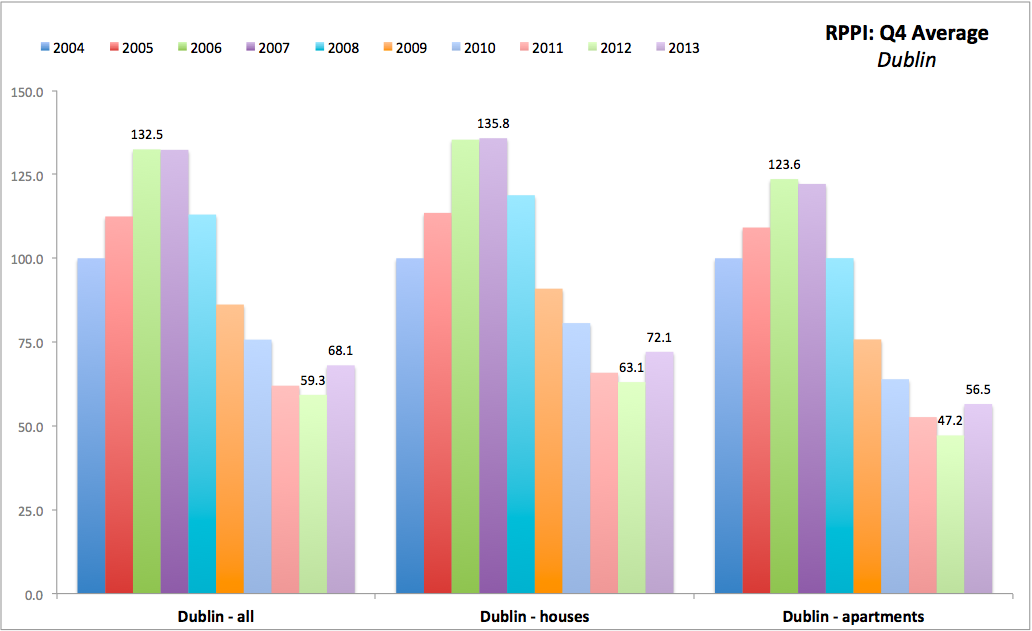Some of the readers of this blog have been asking me to revisit (as I used to do more regularly in the past) the analysis of Irish property prices in relation to the ‘sustainability trend’. With updated CSO data on RPPI, here is the outrun.
The charts below show current National and Dublin property price indices in relation to the trends computed on the basis of the following CORE assumptions:
- Starting period: January 2005
- Starting index ‘sustainability’ positions: National = 82.0 (implying that long-term sustainable market valuations were around 18 percentage points below market price levels at January 2005 or at the levels comparable to Q4 2010); Dublin = 83.0 (implying 17 percentage points discount on January 2005).
Charts above use the following SPECIFIC trend assumptions:
- Linear (simplistic) trend at 2% inflation target + 0.5 percentage points margin. This implies that under this trend, property prices should have evolved broadly-speaking at inflation, plus small margin (close to tracker mortgage rate margin).
In all cases, current markets valuations are well below the long-term sustainability target and there is significant room for further appreciation relative to these trends (see details of target under-shooting in the summary table below).
Chart above shows tow series sustainability targets computed on the basis of different specific assumptions, while retaining same core assumptions:
- I assume that property prices should be sustainably anchored to weekly earnings.
Using only weekly earnings evolution over January 2005-present, as shown in the above chart, both Dublin and National house prices are currently statistically at the levels matching sustainability criteria. There is no statistical overshooting of the sustainability bounds, yet.
Chart above again modifies specific assumptions, while retaining the same core assumptions. Specifically:
- I assume that both earnings and interest rates (using Euribor 12 months rate as a dynamic gauge) co-determine sustainable house prices. In a away, this allows us to reflect on both income and cost of debt drivers for house prices.
As the chart above clearly shows, both National and Dublin property markets are still well underpriced compared to the long term sustainability targets, defined based on a combination of earnings and interest rates. Note: correcting this chart for evolution of unemployment brings sustainability benchmarks roughly half of the way closer to current prices, but does not fully erase the gap.
Summary table below:
So, overall, the above exercise - imperfect as it may be - suggests no evidence of excessive pricing in Irish residential property at this point in time. There are many caveats that apply, of course. Some important ones: I do not account for higher taxes; and I do not factor in difficulties in obtaining mortgages. These are material, but I am not sure they are material enough to bring the above gaps to zero or to trigger overpricing. Most likely, the national residential prices are somewhere around 5-7 percent below their sustainability bounds, while Dublin prices are around 7-10 percent below these bounds. Which means we have a short window of time to bring the markets to the sustainable price dynamics path by dramatically altering supply dynamics in the property sector. A window of 12-18 months, by my estimates.

















































